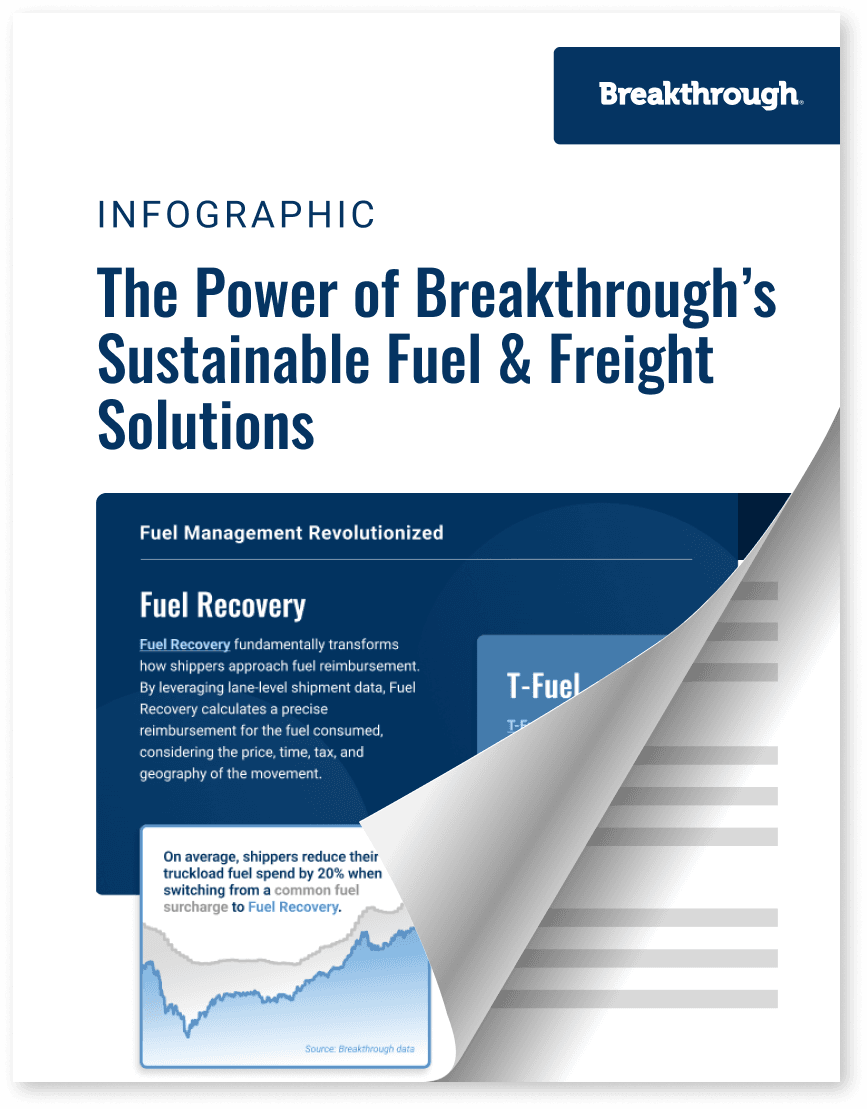The Power of Breakthrough's Sustainable Fuel and Freight Solutions

Freight
3 min read
July 17, 2024
Market Events
4 min read
July 16, 2024
Market Events
3 min read
July 8, 2024

3 min read
March 8, 2021

Share:
The Organization of Petroleum Exporting Countries and cooperating countries (OPEC+) convened for their now monthly meeting on March 4. With the significant increases in energy prices in recent months, market consensus suggested the group would add about 1.0 to 1.5 million barrels of crude oil per day (mmbd) from their current 8.2 mmbd production cuts back into the global market. The meeting concluded with a stance to maintain current production levels despite the oil price resurgence.
WTI Crude oil and U.S. diesel commodity prices increased on the surprise OPEC+ news by nearly $5 per barrel and $0.11 per gallon, respectively, to close the week. This represents the highest price point for crude oil since April 2019 and since January 2020 for diesel (when IMO 2020 sulfur regulations placed unique price pressures on diesel fuel).

The March OPEC+ meeting was also a continuation of surprise results that the cartel has introduced to the 2021 oil and refined products markets. The decision of OPEC+ to move to a monthly cadence in 2021 would traditionally bring a higher frequency of risk of members aligning to the same strategy. Instead, Saudi Arabia’s decision to individually cut an additional 1 mmbd in January set an example of compliance that has been upheld by the whole OPEC+ group in recent months. This ultimately maintains price pressure in the short-term.
Economic recovery and oil demand have brought the biggest uncertainty following the COVID-19 outbreak. With demand recovery well on its way—and oil product inventories and prices reflecting this—the focus has been moved to the supply side of the energy equation. Beyond the OPEC+ decision to maintain production, a new tone was set on energy supply.
A return of oil prices above $60 per barrel before the pandemic would have marked the mobilization of the U.S. oil industry to grow market share, in turn bringing a ceiling for oil and refined products prices. On the heels of the oil price collapse in 2020, U.S. producers are vocal about reducing debt and returning value to investors above significant production growth. This has led to OPEC+ reentering the supply-demand equation as the global swing producer. The recent decision showed they are willing to restrain supply in the immediate future, leading to more questions about how high oil prices can rise before supply is brought back to the market—whether through free enterprise or the cartel’s relaxing of production constraints.
The monthly cadence of OPEC+ meetings will provide more frequent pulse checks on world oil fundamentals but will likely ensure that price volatility remains a reality in 2021 and beyond.

3 min read
July 17, 2024
Maximize transportation efficiency with cohesive fuel and freight strategies. Discover the power of enhanced visibility, cost-effectiveness, and sustainability.
Read more
4 min read
July 16, 2024
Discover how the recent elections in Mexico and the EU are expected to influence energy policies, fuel prices, and dynamics in the transportation sector.
Read more
3 min read
July 8, 2024
Understand the state-specific changes in diesel tax rates and explore strategic solutions for shippers to accurately calculate fuel reimbursements to carriers.
Read more